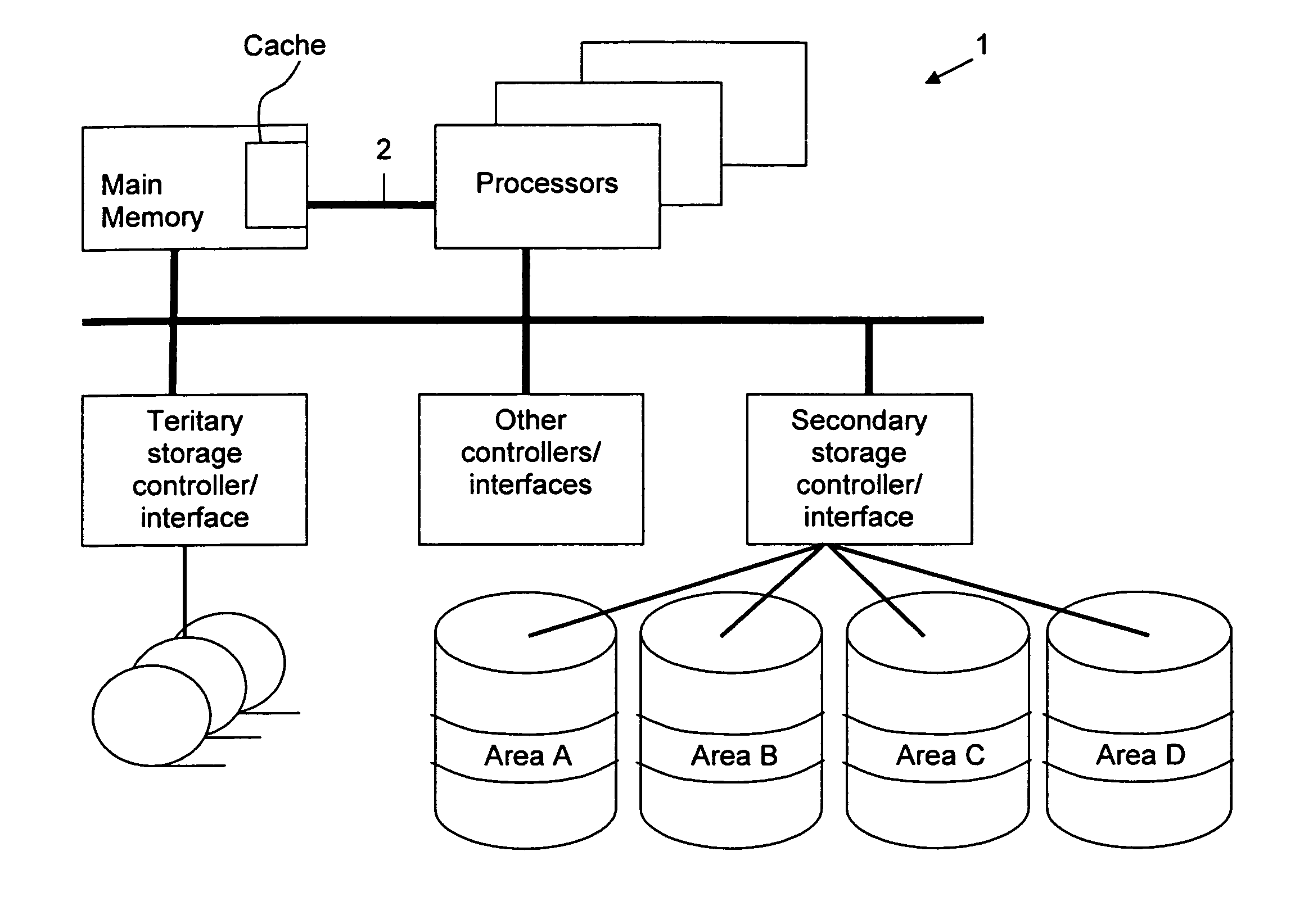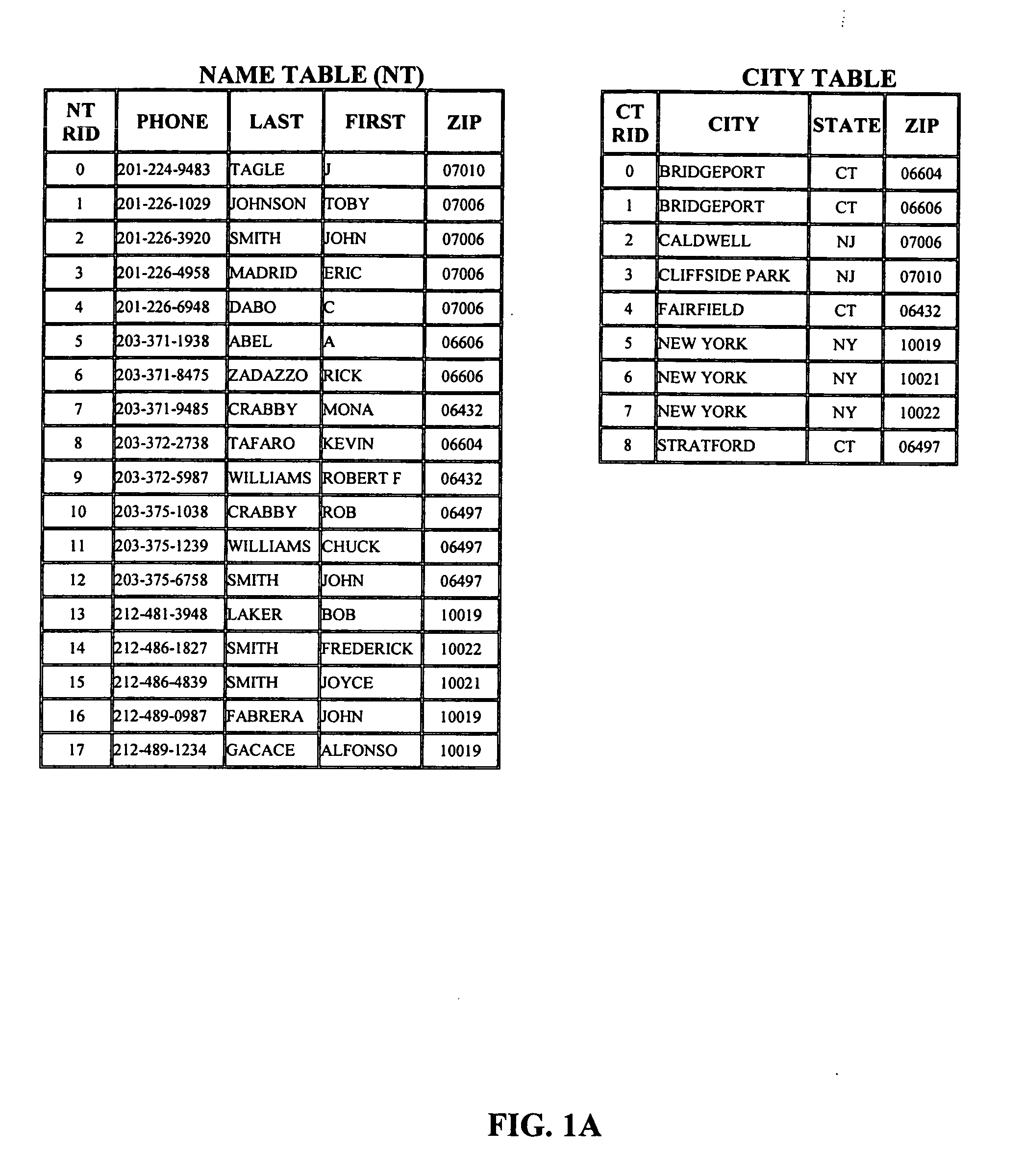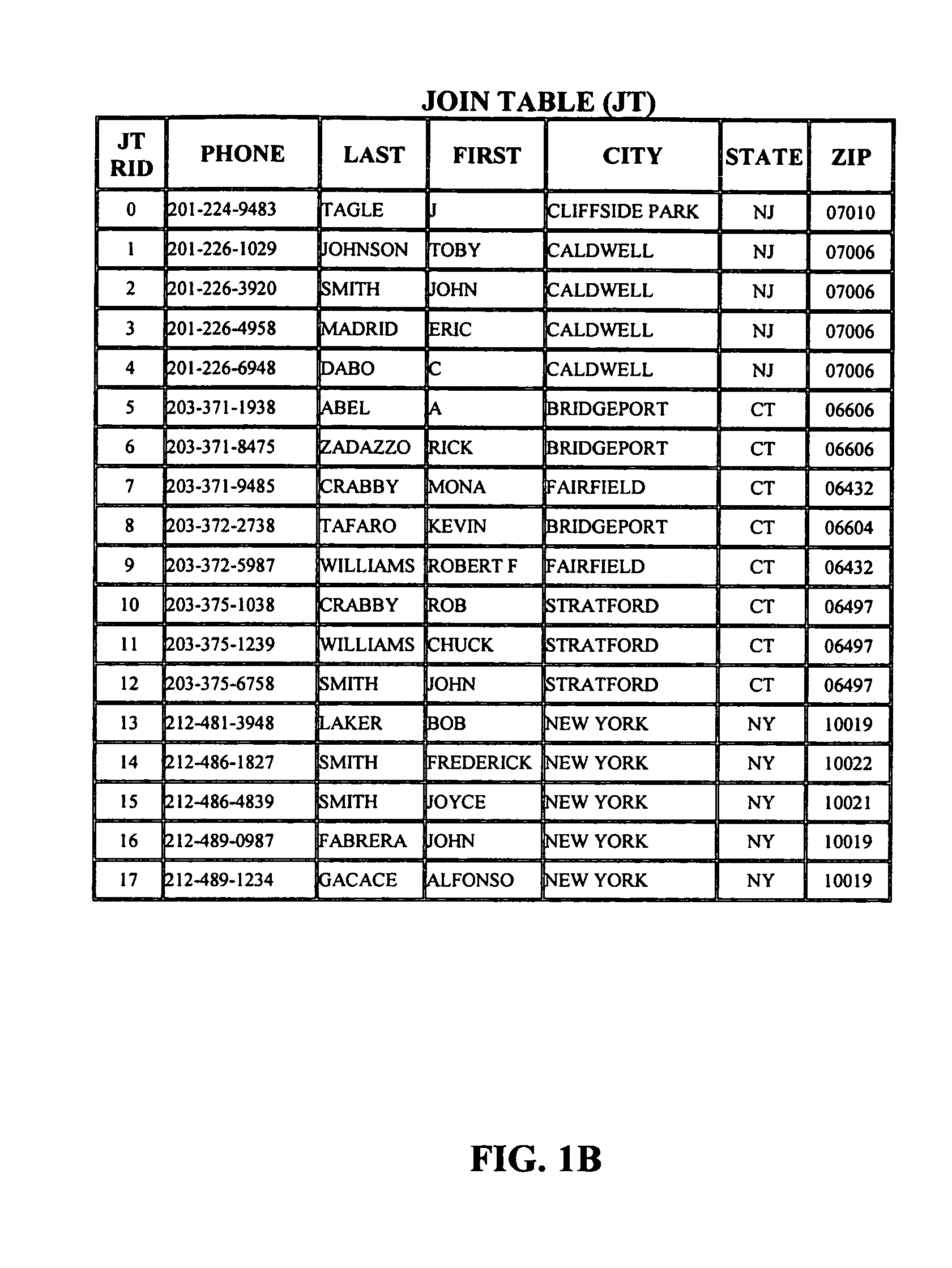Systems, methods, and storage structures for cached databases
a database and cache technology, applied in the field of storage structures for databases, can solve the problems of inability to implement combinatorial index and data redundancy, inability to meet the requirements of database data storage, and inability to add unacceptable update operations, so as to minimize total space, improve read performance, and manage the effect of disk spa
- Summary
- Abstract
- Description
- Claims
- Application Information
AI Technical Summary
Benefits of technology
Problems solved by technology
Method used
Image
Examples
embodiment 1
[0070]A simple embodiment that enables clustered access on any column of a table T in any specified order is to store every possible sort ordering of T. In the preferred embodiment, every version of T is stored using the VID matrix technique described above. One column of the table, being in sorted order, is encoded using a V-list / D-list combination described above, and thus does not need to be stored as a VID list. This also provides for trivial access to any specified range of this table when it is queried on the sorted column (herein called the “characteristic column”). The total number of columns that must be stored in this case is Nc (Nc−1); that is, there are Nc copies of the table, each having Nc−1 columns (Nc being the number of columns).
[0071]Depending on the specific form of the database and the data contained, VID-matrix storage can provide dramatic compression over the size of the raw data; this enables, in roughly the same amount of space used by the original table, a l...
embodiment 2
[0073]The present invention treats a reservoir of disk space as a cache. The contents of this cache are table fragments and permutation lists, partitioned vertically as well as horizontally. (A table fragment may consist of one or more columns.) The table fragments are typically single columns. The list of values stored in a cached projected column is permuted to match the order of columns used for filtering. A filtering operation on such a restriction column represents identifying ranges of entries in that column that satisfy some criterion. The goal of this invention is to have the most useful projected columns remain cached in the matching (or nearly-matching) clustered order of the most common restriction columns. This will make it possible to efficiently return the values corresponding to the selection ranges of the filtering criteria using clustered access.
[0074]Permutation lists for reconstructing the user's specified sort order on any column of interest would also typically ...
PUM
 Login to View More
Login to View More Abstract
Description
Claims
Application Information
 Login to View More
Login to View More - R&D
- Intellectual Property
- Life Sciences
- Materials
- Tech Scout
- Unparalleled Data Quality
- Higher Quality Content
- 60% Fewer Hallucinations
Browse by: Latest US Patents, China's latest patents, Technical Efficacy Thesaurus, Application Domain, Technology Topic, Popular Technical Reports.
© 2025 PatSnap. All rights reserved.Legal|Privacy policy|Modern Slavery Act Transparency Statement|Sitemap|About US| Contact US: help@patsnap.com



